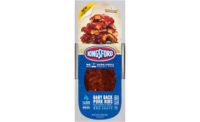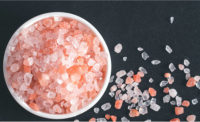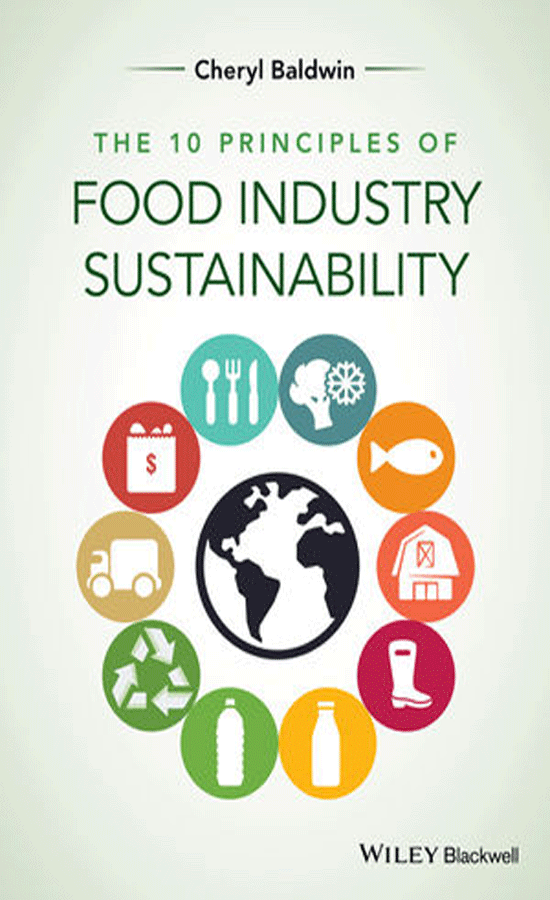Tray packaging has been used for meat, poultry and seafood products for decades. Yet, even though it is well-established, it doesn’t necessarily mean it’s the status quo for the packaging type or style. New designs and technology are improving performance and eliminating the need for components such as absorbent pads, thereby streamlining the packaging operation and eliminating the cost of the pad and the risk of the product picking up fibers from the pads.
One active packaging technology integrates the absorbent into the bottom of the tray. Reducing exposure to fluids enhances product quality and can extend the shelf life of fresh seafood as much as 50 percent. The built-in absorbent also benefits frozen seafood by improving the appearance and shelf life of product that’s thawed in the package. The trays are compatible with automated fill-seal equipment and provide consumer-pleasing product visibility.
Other new tray designs drain away moisture. These self-draining designs enhance product quality, prevent leakage, help maintain a cleaner retail environment and reportedly work as drop-in replacements for standard trays on automated packaging lines.
One option captures fluids in a lower chamber formed by a layer of polyethylene terephthalate (PET) or polypropylene (PP) film, which is sealed to the base of the PET or PP tray. Fluid drains in but does not drain out even if the package is turned upside down. The opaque film conceals the fluid and can be printed with branding or other information.
In another fluid-draining design, the product rests on perforated film, which in turn is sealed to a tray with a honeycombed floor. Fluid drains through the perforations and is captured by the honeycomb channels.
Other tray innovations focus on improved sustainability. Interest in replacing plastic trays with renewable fiber-based structures seems to be particularly high. For example, Snap Kitchen, an Austin, Texas-based, omnichannel retailer of meals, sides, juices and snacks, has rolled out compostable, eco-friendly packaging at its 35 locations in Austin, Dallas and Houston, Texas, and Philadelphia, Pa. Shifting to plant-based, dual-ovenable packaging from recyclable plastic trays will save 500,000 pounds of plastic per year. The single-use, plant-based trays can be discarded in a compost bin or trash container.
Dale Easdon, CEO of Snap Kitchen, explains, “Since inception, our commitment to locally sourced products, responsibly sourced meats and ingredients containing zero additives or GMOs has been paramount. We’re thrilled to round out our commitment to our customers by offering an eco-friendly container to remain a sustainable and eco-conscious company.”
The move also shrinks the company’s carbon footprint since five compostable trays can be produced with the same amount of energy needed to make one plastic tray.
In the United Kingdom, the Waitrose & Partners supermarket chain has expanded a trial of a fiber-based replacement for black plastic trays for its ready meals. The effort is part of the supermarket’s commitment to eliminate black plastic packaging for its own brands by the end of 2019. The cream-colored container is certified by the Forest Stewardship Council, in Bonn, Germany. Instructions on the package tell consumers to rinse the tray and recycle it with their paper.
Currently, much of the black plastic packaging used by supermarkets is not recycled because the lasers used by waste processors cannot recognize the color effectively. Karen Graley, packaging manager at Waitrose, explains: “Black plastic continues to be a challenge to recycle. This is why we see innovating in alternative materials as so important. If our trial is a success we’ll be looking to roll it out further, and this could potentially save millions of plastic trays going to landfill every year.”
In addition to eliminating black plastic packaging for its own brands, Waitrose & Partners has pledged that all its own label packaging will be widely recyclable (under the U.K.’s On-Pack Recycling Label guidelines), reusable or home-compostable by 2025.
Another U.K. retailer, Morrisons, also is eliminating black plastic trays. It’s transitioning to vacuum skin packaging with a printed paperboard base for 14 of its Best brand cooked meats, including ham, chicken, turkey, beef and pork. The new structure combines barrier properties, seal integrity and easy-peel opening along with a significantly lower carbon footprint and a composition of more than 75 percent renewable materials. The combination of the existing polyethylene shrink film with the recyclable board means 80 percent of the pack is classified as Widely Recycled under the U.K.’s On-Pack Recycling Label guidelines, compared with the previous pack which was not recyclable because of the multilayer base material. The printable paperboard also eliminates the need for additional printed components. NP







